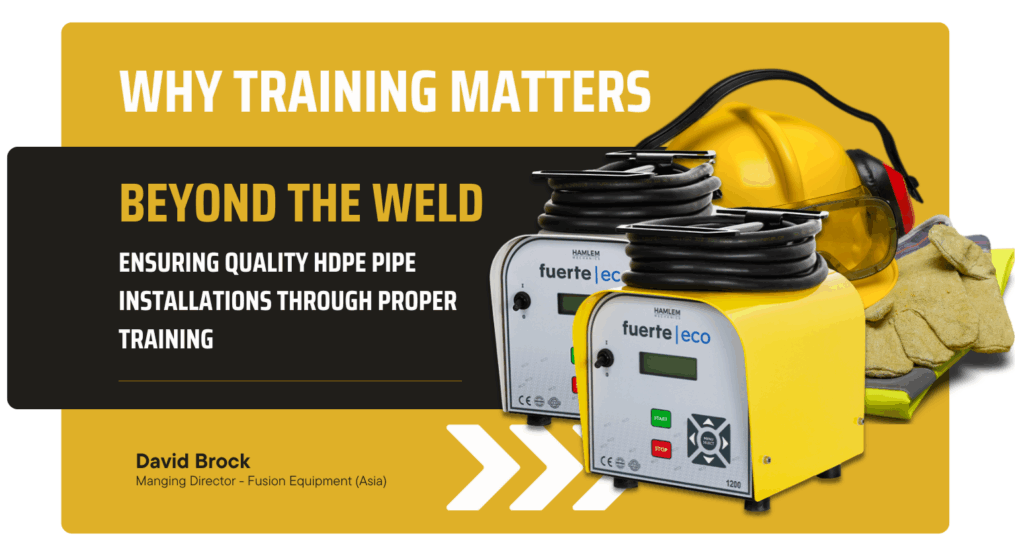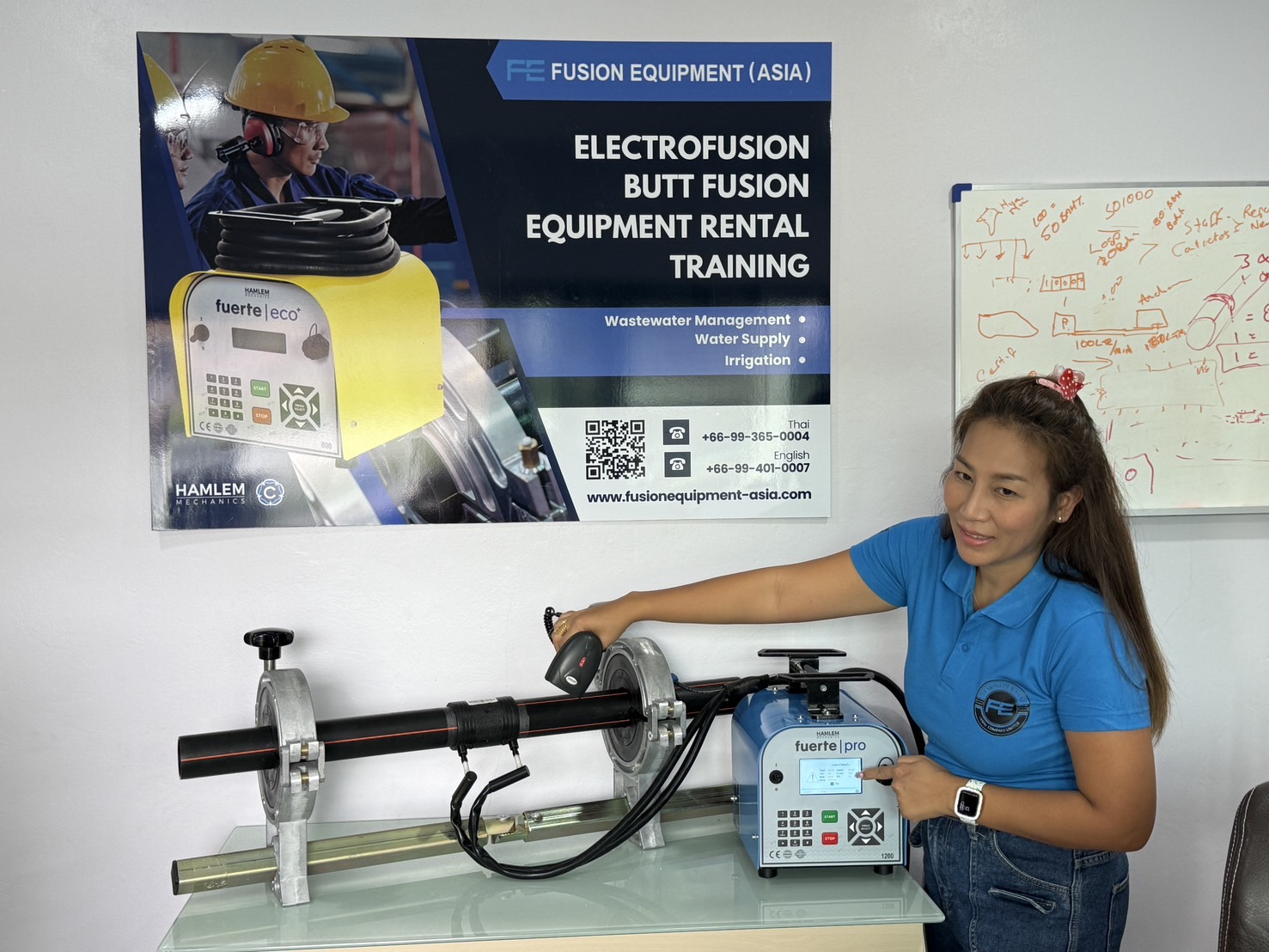Why Proper Training is Essential for Reliable Polyethylene Pipe Installations
By David Brock, Managing Director, Fusion Equipment (Asia), www.fusionequipment-asia.com
Polyethylene (PE) piping systems have become a mainstay in modern infrastructure—particularly in the water and gas sectors—due to their durability, chemical resistance and ease of installation. Two key methods for joining PE pipes—electrofusion and butt fusion welding—have emerged as the industry standard for creating robust, leak-free connections. While these techniques are efficient and technically advanced, the long-term reliability of any welded joint ultimately hinges on the quality of the installation—and that begins with proper training.
Fusion Welding: Simple in Theory, Complex in Practice
Electrofusion is often promoted as a straightforward process: insert pipe ends into a coupling with embedded heating elements, apply controlled heat and allow the materials to fuse. Similarly, butt fusion involves aligning and heating pipe ends, then pressing them together to create a solid-state bond. Both methods are designed for speed and repeatability—especially when using automated fusion machines.
However, real-world conditions frequently introduce complexity. Field experience shows that even minor deviations from best practice can lead to joint failures, particularly in pressurised systems where long-term performance is critical.
Typical issues encountered in poorly executed welds include:
- Inadequate or improper cleaning of the fusion zone
- Use of unsuitable preparation tools, such as sandpaper
- Inconsistent removal of the oxidised surface layer
- Pipe misalignment prior to fusion
These factors, often overlooked, can compromise weld integrity and lead to premature system failures, increasing operational and safety risks.
Why Training Matters
Despite the growing use of fusion welding in utility and industrial applications, there remains a widespread assumption that these methods require minimal training. This can be a costly mistake.
Structured training programmes help address the underlying causes of poor installation by instilling:
- A detailed understanding of surface preparation and contamination risks
- Proper use of fusion equipment and tooling
- Insight into fusion mechanics, pressure control and timing parameters
- Quality assurance through post-weld inspection techniques
For instance, in electrofusion welding, it’s essential to peel at least 0.2mm of oxidised material from the pipe surface using precision rotary peelers—not hand scrapers—to ensure optimal bonding. In butt fusion, precise control of heating, bead-up pressure, soak time and cooling is equally critical.
Addressing the Industry’s Skills Gap
As demand for PE pipelines grows across Asia and beyond, the availability of skilled installers has not always kept pace. Newcomers to the industry—particularly from smaller contractors—often lack formal training in fusion techniques. As a result, the potential for installation errors rises, sometimes with costly or dangerous consequences.
The solution lies in accessible, hands-on training, delivered by experienced professionals and tailored to real-world conditions. Several training providers across the region, such as Fusion Equipment Asia, offer in-depth courses covering both electrofusion and butt fusion welding, complete with practical workshops and certification options.
Such training not only improves installation quality but also helps companies comply with international standards and local regulations. It ultimately leads to better system performance, fewer repairs, and a safer work environment.
Ensuring Long-Term Pipeline Integrity
While the benefits of PE fusion welding are clear—speed, strength, flexibility—these advantages can only be fully realised when installation is carried out correctly and consistently. Proper preparation, correct tool use and an understanding of fusion principles are all essential elements of a successful weld.
Training should not be viewed as a one-time requirement, but as an ongoing part of workforce development. As materials, machines and standards evolve, so too should the skills and knowledge of those working in the field.
Final Thoughts
Reliable fusion welding is a cornerstone of safe, efficient PE pipeline systems. While the equipment may be designed for simplicity, the process itself demands precision, discipline and a strong foundation of knowledge. Whether you’re overseeing municipal infrastructure, industrial installations, or utility repairs, investing in proper training is essential.
Industry professionals are encouraged to explore certified training options through recognised providers. Organisations like Fusion Equipment Asia are among those offering tailored training courses for installers, engineers and supervisors across the Asia-Pacific region.

To learn more about fusion welding training opportunities, visit: www.fusionequipment-asia.com

